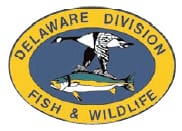DNREC Urges Motorists To Watch Out For Deer Crossing Roadways, Especially At Dusk

Delaware –-(AmmoLand.com)- DNREC urges motorists to watch out for deer crossing roadways, especially at dusk.
The end of daylight savings time means more 9-to-5 workers will be driving home at dusk, and the Department of Natural Resources and Environmental Control’s Division of Fish and Wildlife would like to remind drivers to remain alert for deer crossing roadways.
“We might be heading home to relax at the end of our day, but deer are just beginning their busiest time around dusk,” said DNREC Game Mammal Biologist Joe Rogerson. “Twilight hours, especially from sunset to midnight and shortly before and after sunrise, are when motorists need to be especially alert and watch for them.”
The average white-tailed deer in Delaware weighs about 130 pounds, with larger bucks tipping the scales at 180 pounds or more. Hitting an animal that size can do serious and expensive damage to your vehicle. Such a collision may also cause injury to you or your passengers or trigger an accident involving you and other motorists.
In 2007, Delaware police departments logged a statewide total of 1,349 animal-vehicle crashes – the overwhelming majority involving deer – which resulted in one fatality, 43 personal injuries and 1,305 major and minor property damage-only cases. In 2008, a total of 1,474 crashes were reported, resulting in one fatality, 44 personal injuries and 1,429 property damage-only cases. For 2009 so far, up to the third week of October, 942 crashes have been reported, with no fatalities and 43 personal injuries. Many more crashes may have gone unreported to the police or were reported only to insurance companies.
National statistics also show that about half or more of all deer-vehicle collisions occur during October, November and December, with most concentrated in October and early November.
“Fall is mating season for deer, and in Delaware this year, we’re expecting the rut to begin in early November,” Rogerson said. “Because of this, deer are more active, with bucks single-mindedly pursuing does – sometimes right into the path of your car.”
“Although in the last three years Delaware’s deer population has finally stabilized and started to decrease, there are still numerous areas in the state that have significant deer populations,” added Rob Hossler, DNREC Game Species Program Manager. “Combine a high deer population with decreasing deer habitat and increased commuters, and you have a recipe for a high number of deer-vehicle collisions.”
Attentive driving is the best way to avoid deer collisions. Keep these tips in mind:
- Turn your headlights on at dawn and dusk and keep your eyes on the road, scanning the sides of the road as well as what’s ahead of you. When there is no oncoming traffic, switch to high beams to better reflect the eyes of deer on or near the roadway. To reduce your risk of injury in a collision, always wear your seatbelt.
- Watch for deer crossing signs that mark commonly used areas, and be aware that deer typically cross between areas of cover, such as woods or where roads divide agricultural fields from forestland.
- If you see a deer crossing the road ahead, slow down immediately and proceed with caution until you are past the crossing point. Deer usually travel in groups, so if you see one deer, there are likely to be others.
- Slow down and blow your horn with one long blast to frighten deer away. Do not rely on devices such as deer whistles, deer fences and reflectors to deter deer, as these devices have not been proven to reduce deer-vehicle collisions.
- Do not swerve to miss a deer – brake and stay in your lane. Losing control of your vehicle, crossing into another lane, hitting an oncoming vehicle or leaving the roadway and hitting another obstacle such as a tree or a pole is likely to be much more serious than hitting a deer.
- If you hit a deer, stop at the scene, get your car off the road if possible and call police. Do not touch the animal or get too close.
“A frightened and wounded deer can cause serious injury to a well-meaning person trying to ‘help.’ You could be bitten, kicked or even gored by a buck’s antlers. It’s safer to keep your distance,” said Rogerson.
If you would like to keep a deer killed on the road, the Delaware State Police can issue a vehicle killed deer tag.
